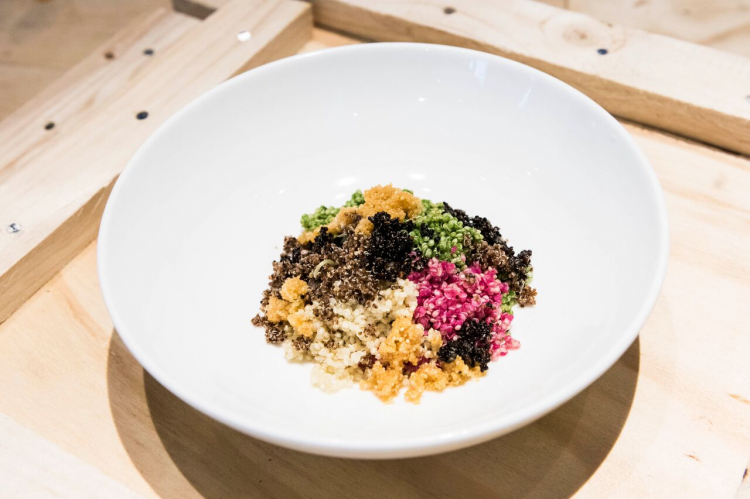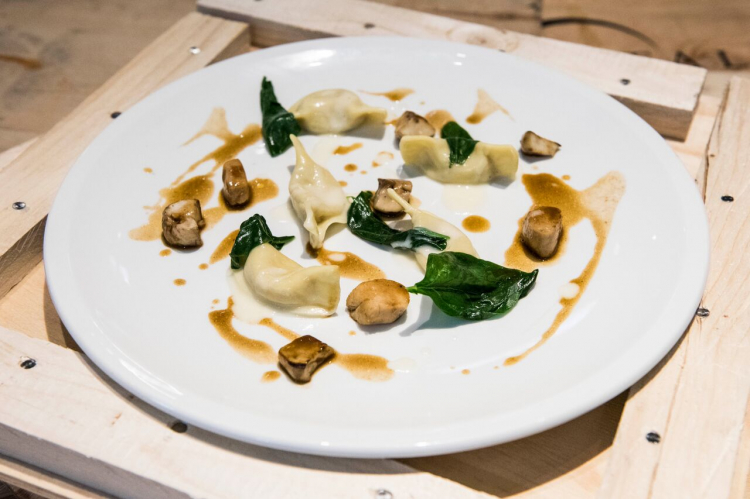High Altitude grains. This was the title of Virgilio Martinez’s lesson at Identità New York. The number one chef in Latin America and Peru with Central, held a lesson at Eataly Flatiron with Lorenzo Dal Bo, the promising Bolognese chef whom we bumped into two years ago in the Faroe islands, and is now working in Lima (in between, he worked at Da Vittorio in Brusaporto).
«Being on this stage comes very natural, because all I do with Mater Iniciativa has to do with identity. We’re interested in the stories of producers and their products. Peruvian local is gradually becoming global». An increased popularity which we also owe to Virgilio’s vertical gastronomy: «Our menu is a sum of altitudes. It draws from the Amazon forest and the Andes. We can find coffee, potatoes, cocoa and quinoa in the same small piece of land. We have 180 varieties of corn».
Today’s small piece of land is the Plateau around Puno, the most important city overlooking the banks of Lake Titicaca. «They use plants to cure and colour themselves: they paint their face with seeds. Of course we’re interested in the gastronomic value of these ingredients». And then he shows the content of the boxes placed on the counter: red cactus roots. Avocado (which later becomes a delicious cream on the bottom of the grains). Black quinoa. Canihua seeds. Aromatic plant huacatay. Six types of indigenous wheat varieties.

Hig altitude garins by Virgilio Martinez
But there’s a little of Italy in the dish too:
Grana Padano water and
Lavazza coffee («I like the way in which they giving a name to producers, to the coffee’s origin»). The tasting is a colourful and very intriguing mosaic of grains. «There’s nothing better», ends Virgilio, «than intertwining memory with what we don’t know».
With
Roberto Cerea aka
Bobo the moment comes for
East Lombardy, 2017 European Region of Gastronomy. Who better than the big chef with three Michelin stars shining on
Da Vittorio to illustrate the delicacies of East Lombardy to the American public?
«I’m here to present a dish that finely represents our territory as well as the philosophy of our restaurant,
Polenta and rabbit. But it’s not just this because we use the polenta that is left over in another typical recipe of Bergamo. We use to fill
casoncelli, which some believe was the first filled pasta in Italian tradition». To the polenta, we add taleggio and Grana Padano. They use rabbit loin. Finishing with mushrooms and spinach.

Casoncelli with polenta and rabbit by Bobo Cerea
On a private note: «Bobo, what is it like, working with your family?», asks presenter Vince Gerasole, «Better than working with partners», he replies, «it’s best to fight with a brother, than a partner. In the end, the heart always wins, not the wallet». But who’s in charge in Brusaporto? «My mum. She’s the real
big boss».
Bobo ends the lesson with a coup de theatre: he pulls out the marvellous
Gioconda, a cake made with natural yeast with dark chocolate,
gianduia, pralined hazelnut paste and candied orange zest. And while the American audience goes into raptures, we finally think of the unforeseen similes between
Central’s "vertical" cuisine, and
Da Vittorio’s "horizontal" one: localism, identity and product.
Translated into English by Slawka G. Scarso